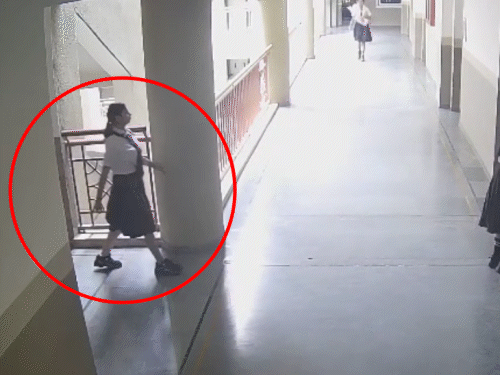Rehab’s Dark Side: Unmasking the Flaws in America’s Drug Treatment System
A deep dive into the hidden flaws of U.S. drug treatment centers, exposing gaps in rehab efficacy, policy failures, and the urgent need for reform.

For decades, drug rehabilitation centers have been seen as a lifeline for those struggling with addiction. Glossy brochures, motivational slogans, and heartwarming success stories have painted an image of recovery as both achievable and guaranteed. But behind the promise of healing lies a troubling reality: many American rehab facilities fall short of delivering effective, science-based treatment. A new book, now stirring debate among health policy circles, sheds light on the murky underbelly of the U.S. rehabilitation industry, raising urgent questions about efficacy, regulation, and reform.
The Shiny Exterior vs. the Hidden Reality
When families send loved ones to rehab, they often do so in desperation, willing to pay exorbitant sums in exchange for hope. The average cost of a 30-day inpatient program in the U.S. ranges between $15,000 and $30,000, with luxury centers charging even more. Yet, according to peer-reviewed research, relapse rates for substance use disorders hover between 40% and 60%, comparable to chronic illnesses like hypertension or asthma.
The book under review argues that unlike conditions such as heart disease—where treatment is continuously updated based on science—many rehab centers rely on outdated models, unlicensed staff, and one-size-fits-all approaches. Patients are often left cycling in and out of treatment, their struggles compounded by financial strain.
The Science vs. The Sales Pitch
Scientific research consistently emphasizes that effective addiction treatment requires evidence-based methods such as medication-assisted treatment (MAT), behavioral therapy, and long-term support. The National Institute on Drug Abuse (NIDA) underscores the importance of individualized care, noting that addiction is a complex brain disorder, not a simple failure of willpower.
Yet, many facilities market “quick fixes” and spiritual cures, some leaning heavily on the traditional 12-step model without integrating medical interventions. While the 12-step approach has helped millions, relying solely on it can sideline essential pharmacological treatments like methadone, buprenorphine, or naltrexone, which have proven track records in reducing overdose deaths.
As one addiction researcher recently noted in The Lancet Psychiatry, “rehab should not be a revolving door, but a structured path to stability.” Unfortunately, the industry’s lack of oversight allows questionable practices to persist.
Stories from the Ground
Beyond the data, real human stories reveal the cracks in the system. Families recount experiences where loved ones were discharged prematurely due to insurance limitations, only to relapse days later. Former patients describe group sessions led by staff without medical credentials. Others highlight the emotional toll of being promised “cures” that never materialized.
The book captures these voices, weaving them with case studies that illustrate how profit motives often overshadow patient well-being. It paints a stark contrast between the glossy marketing of treatment centers and the harsh reality faced by those inside.
Policy Failures and the Need for Reform
One of the book’s central critiques is directed at U.S. policy. Despite billions in federal spending on the opioid crisis, much of the funding has not translated into standardized, evidence-based care across the country. Unlike European nations—where addiction treatment is often integrated into national healthcare systems—America’s fragmented model creates disparities.
For instance, countries like Portugal and Switzerland have adopted harm-reduction strategies, including supervised consumption sites and widespread MAT access, with measurable success in lowering overdose rates. Meanwhile, the U.S. remains divided, with treatment varying drastically by state and often influenced by politics more than science.
The Substance Abuse and Mental Health Services Administration (SAMHSA) has pushed for greater accountability, but enforcement remains limited. Without national standards, many rehab facilities continue to operate unchecked.
The Path Forward: Science, Accountability, and Compassion
The book calls for sweeping reforms that prioritize transparency, data-driven outcomes, and long-term care models. Recommendations include:
-
National Accreditation Standards: Mandating evidence-based practices across all facilities.
-
Insurance Reform: Ensuring coverage for extended treatment durations, not just short-term detox programs.
-
Integration of Science and Medicine: Expanding access to MAT and requiring licensed medical professionals in treatment centers.
-
Ongoing Support Systems: Building community-based aftercare networks to reduce relapse.
These proposals mirror findings from research published in the Journal of the American Medical Association (JAMA), which highlights the need for comprehensive treatment models addressing both medical and social factors of addiction.
Until such reforms are enacted, families navigating rehab options must remain vigilant, asking critical questions about credentials, treatment methods, and long-term support plans.
A National Reckoning on Addiction Care
Addiction is not just a personal battle—it is a societal one. The flaws in America’s rehab system do not only impact individuals but ripple outward into communities, workplaces, and healthcare systems. With overdose deaths still at alarming levels, the nation cannot afford to let profit-driven models dictate the path to recovery.
The new book serves as both a warning and a call to action, urging policymakers, healthcare providers, and families to demand better. For those who believe in the promise of rehabilitation, the message is clear: only through science, compassion, and accountability can true healing begin.
What's Your Reaction?
 Like
0
Like
0
 Dislike
0
Dislike
0
 Love
0
Love
0
 Funny
0
Funny
0
 Angry
0
Angry
0
 Sad
0
Sad
0
 Wow
0
Wow
0








































































